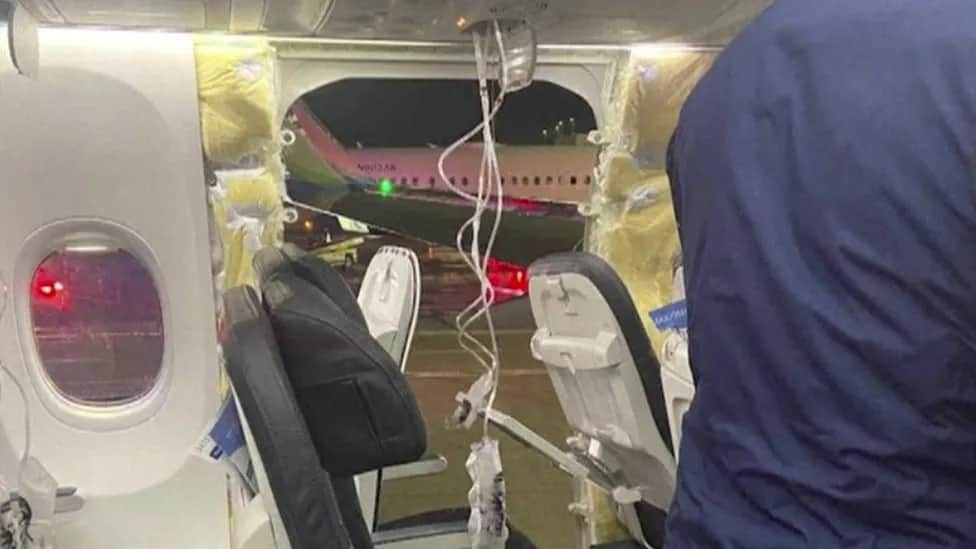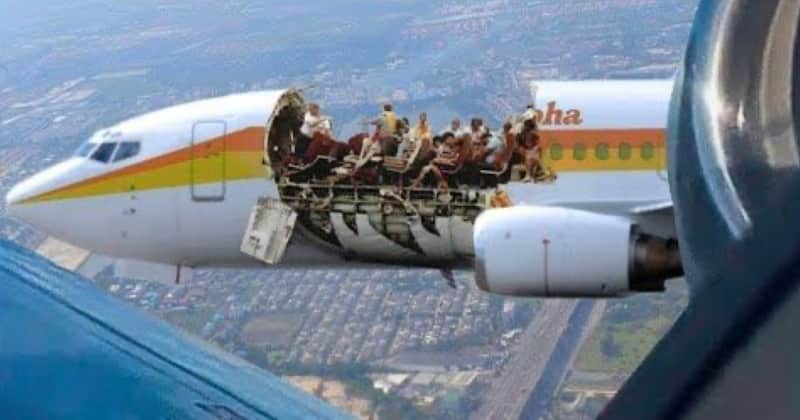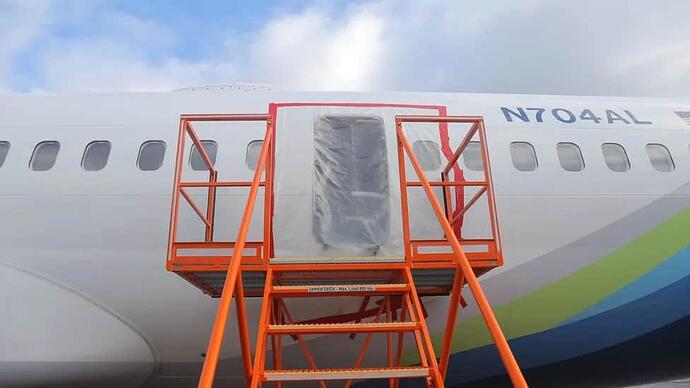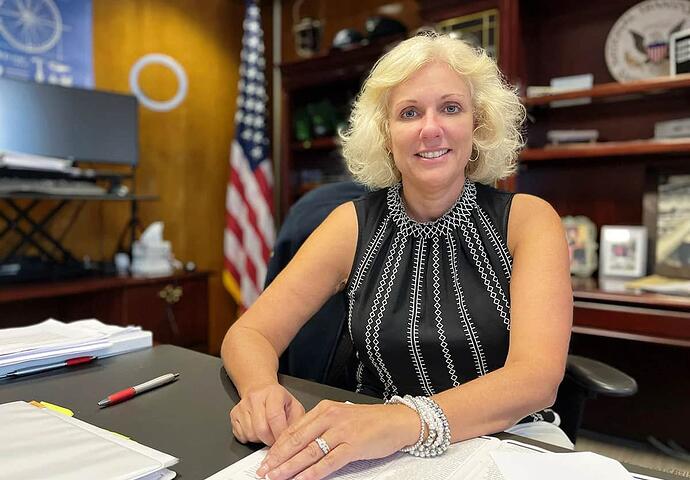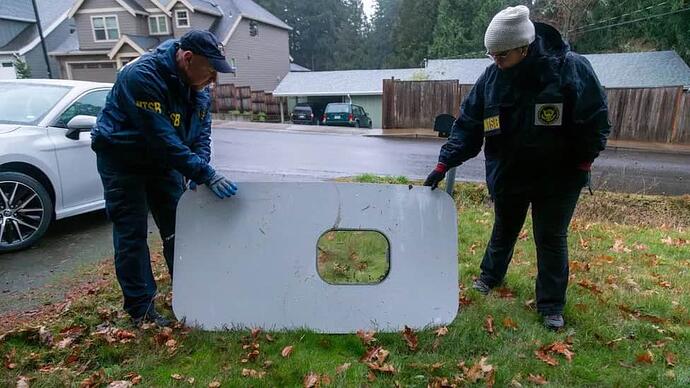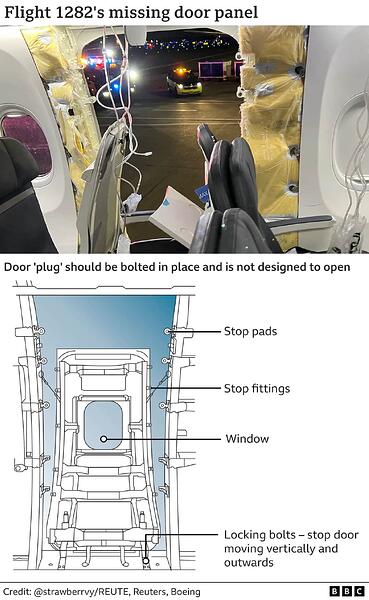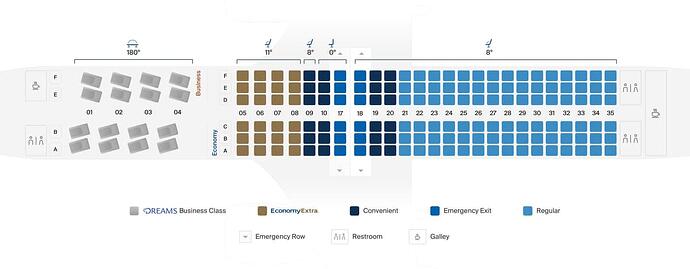A passenger plane lost a section of its fuselage in mid-air, forcing it to make an emergency landing in the US state of Oregon on Friday.
The Alaska Airlines Boeing 737 Max 9 returned to Portland 35 minutes into its flight to California after an outer section, including a window, fell. The flight had reached 16,000ft (4,876m) when it began its emergency descent. Alaska said 177 passengers and crew were on board and it “landed safely”. The airline said it would “temporarily” ground all 65 of its 737 Max 9 aircraft to conduct inspections.
The section of fuselage involved appears to be an area that can be used as an additional emergency exit door by some operators of the aircraft type, but not by Alaska. Boeing said it was aware of the incident and is “working to gather more information”.
The Boeing 737 Max has been described as “the most scrutinised transport aircraft in history” after a series of safety issues and investigations. The Max was grounded in March 2019 for a year-and-a-half after two of the type crashed in similar circumstances, killing those on board. Aviation expert John Strickland said the Alaska Airlines incident is very different to those crashes, adding since the 737 Max came back into service it had “an enormous safety record”.
While the Max 9 is capable of seating up to 220 passengers, Alaska Airlines configures its Max 9s with a lower-density three-class interior, comprising 178 seats – including 16 in the first-class and 24 in the premium-class cabins.
This means it is able to operate the type with a reduced number of exits. The carrier retains the main forward and aft exits, as well as the two overwing exits on the type, but not the mid-cabin exits between the wing and the rearmost doors.
Door de-activation normally involves removing the actuation and exit slide systems from the door, effectively turning into a fuselage window panel.
Yes,he seem’s to be picking them.I think I’ll travel by boat from now on.
I’ll be watching it as soon as I can get it for free … ![]()
I’ve seen “Alive” (1993) , another movie which recreates the appalling tragedy (with mixed results, IMO), and I’ve got a couple of documentaries., including this excellent one:
BBC Four - Storyville, Stranded! The Andes Plane Crash Survivors.
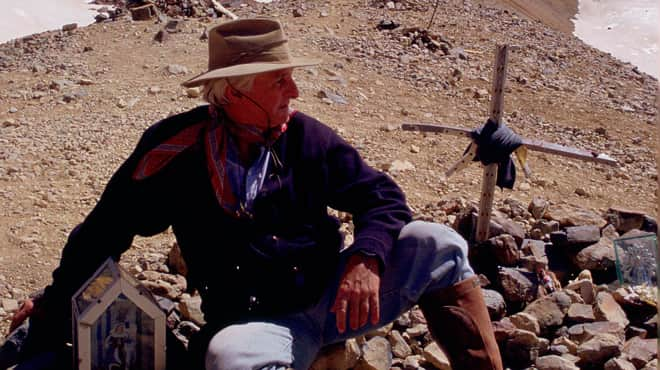
Thirty years later, those that got down from the mountain relive their 72 days ‘up there’ to give this extraordinarily powerful, vivid and immediate account of human endurance and heroism.
United Airlines says it has carried out the inspections required by the FAA on some of its 79 Boeing 737 Max 9 planes.
Removing some of the aircraft from service is expected to cause about 60 cancellations on Saturday, the airline said in a statement.
Earlier, the FAA said it would “order the temporary grounding of certain Boeing 737 Max 9 aircraft operated by US airlines or in US territory”.
Required inspections will take around four to eight hours per aircraft, it said.
A news report of the incident:
Personally I prefer an aisle seat and I always keep my seat belt on (loosely)
The incident that befell Alaska Airlines Flight 1282 on Friday would have been terrifying for passengers, but ultimately no-one was seriously hurt and the aircraft landed safely.
However, the picture could have been very different if the failure had happened further into the flight.
The incident happened minutes after take-off from Portland International Airport while the aircraft - a Boeing 737 Max 9 plane - was still climbing.
An unused emergency exit door blew out, leaving a gaping hole in the side of the fuselage.
The plane suffered a rapid loss of cabin pressure, as air rushed out and the atmosphere within the plane equalised with the thinner air outside.
The impact of this was reduced by two key factors:
- First of all, the passengers would all have been wearing seatbelts at this stage in the flight, keeping them in their seats.
- Secondly, data from aircraft monitoring sites show that the plane reached a maximum height of around 16,300ft before descending quickly.
The cruising height of a 737 Max is around 38,000ft. At this level, the difference between the pressure inside the aircraft and the atmosphere outside is much greater. Had the door blown out here, the sudden rush of air would have been much more violent, and potentially lethal, especially if passengers were not wearing seatbelts.
“Passengers in the seats immediately adjacent, or in other seats around it who weren’t wearing a seatbelt could have been sucked out of the aircraft”, explained Tim Atkinson, an aviation consultant and former aircraft accident investigator. “I guess the worst case could be you lose a row full of people and a couple of others standing nearby as well.”
The temperature in the aircraft would also have dropped dramatically. Air at such altitudes is typically very cold, around -57C (-71F).
Passengers and crew would have been reliant on emergency oxygen. Without it they would have quickly lost consciousness.
In the wake of recent accidents/incidents, Boeing is facing widespread accusations of putting profit above the safety of passengers.
Boeing is in the process of ramping up production of the 737 Max to cut waiting times for customers and reduce its backlog of orders.
Whisteblowers claimed the company was putting undue pressure on its employees to build too many aircraft too quickly, leading to chaotic conditions in its factories, and corners being cut on production lines.
Probably one of the most dramatic Boeing 737 structural failures was that of an early version, a 737-200, Aloha Airlines Flight 243, in 1988 - at 24,000 feet (7,300 m), part of the roof tore off, substantially damaging the aircraft but leaving it flyable (just) - sadly, one crew member was sucked out of the aircraft and disappeared while 65 of the 95 “souls on board”, were injured, 8 of them seriously.
Two phones and a “door plug”: these are some of the items found in Oregon days after Alaska Airlines flight 1282 lost part of its fuselage at 16,000 feet.
But the search continues for other lost belongings and parts, thought to include a cushion from the seat immediately next to the blown-out section of fuselage - which was thankfully unoccupied.
The door plug, was found by a local school teacher named Bob, according to US National Transportation Safety Board (NTSB) chair Jennifer Homendy.
The discovery came after officials from the NTSB asked the public for help finding the door plug - a 27kg (60lb) piece of fuselage with a window, that can be used as an emergency exit in certain configurations.
They believed the door could have landed around Barnes Road, near Oregon-217 and the Cedar Hills neighbourhood, based on radar data.
During a news conference, Ms Homendy said Bob sent in a picture of the missing piece, which ended up in his backyard in Portland.
“I can just see the outside of the door plug from the pictures, the white portions,” Ms Homendy said. We can’t see anything else but we’re going to go pick that up and make sure that we begin analysing it."
“Thank you Bob,” she added.
That’s a lucky find … ![]()
ETA (breaking):
Alaska Airlines plane had warnings days before mid-air blowout
Alaska Airlines placed restrictions on the Boeing plane involved in a dramatic mid-air blowout after pressurisation warnings in the days before Friday’s incident, investigators say. The jet had been prevented from making long-haul flights over water, said Jennifer Homendy of the US National Transportation Safety Board (NTSB).
Speaking at a news conference, Ms Homendy said pilots reported pressurisation warning lights on three previous flights made by the specific Alaska Airlines Max 9 involved in the incident. The decision to restrict lengthy flights over water was so that the plane “could return very quickly to an airport” in the event the warnings happened again, the NTSB chief added. “An additional maintenance look” was requested but “not completed” before the incident, Ms Homendy said.
It is not clear if there is a link between the issues that led to those warnings, and the issue that caused the blowout on 5 January.
The plane was brand new having been delivered to Alaska Airlines in October - at which time it was judged by the FAA to be airworthy.
3 previous warnings and no check … ![]()
“Door plug.” A euphemism for, “Lets block off a couple of emergency exits and bung in some more seats to make more money.”
“How’s that worked out for you so far?”
The opposite is true:
The Boeing Max 9 is built with 10 doors. Two full sixed doors at the front, two full sized doors at the back, to over-wing hatches, and two full sized doors halfway between the wings and the rear doors.
Depending on the seat configuration and by reducing the total number of seats, it is permitted to block off two of the full sized doors with factory made doors-blanks, or plugs, with no handles, held in by a series of bolts and fixed latches, plus retaining wires used to stop the doors from falling out when the bolts are removed, then covered over with interior trim so that it no longer looks like a door.
By reducing the number of economy class seats and installing more comfortable “premier” seats with increased leg room compared to economy seats, Alaska Airlines met the criteria of being able to block off the two doors in the economy section between the wings and rear doors. This also enabled them to install three more economy seats where access to the two blocked off doors would normally be.
The economy seats to the rear of the wings on the starboard side have less legroom than those to the rear of the wings on the port side which saves them losing another three paying seats.
By installing premier seats, they can charge people more money, added to the three additional passengers they can carry by putting in the seats where the middle-rear exit doors used to be.
To re-iterate, the doors are blocked off in the economy section that has the highest density of passengers, not in the area with the reduced number of seats.
I stand by my previous statement that blocking off two doors is done purely to make more money in my humble opinion.
I think you are probably right. I saw a video on airline economics which showed basically that the small number of Premium and business class seats bring in several times more money than the whole of economy class on a flight.
So having less seats numbers still means that more seats can crammed into economy class while the far more expensive seats are each taking up more room reducing overall numbers.
Found a video that deals with this
You said:
“Door plug.” A euphemism for, “Lets block off a couple of emergency exits and bung in some more seats to make more money.”
Your new post says something entirely different.
The source of your “new” information?
No it doesn’t. It says the same thing in a different way.
Bolts in need of “additional tightening” have been found during inspections of Boeing 737 Max 9s, United Airlines has said.
Inspections began after a section of the fuselage fell from an Alaska Airlines 737 Max 9 on Friday.
United Airlines said “installation issues” relating to door plugs would be “remedied” before the aircraft type would return to service.
Some 171 planes of the same type remain grounded by the US regulator.
In its statement, United said: “Since we began preliminary inspections on Saturday, we have found instances that appear to relate to installation issues in the door plug - for example, bolts that needed additional tightening.”
The vast majority of Boeing 737 Max 9s used in the US are operated by United Airlines and Alaska, while Turkish Airlines, Panama’s Copa Airlines and Aeromexico have also grounded jets of the same model for inspections.
I agree that I could have explained better what I meant in my first post.
Perhaps saying, “more higher revenue seats,” or “remove some cheap seats and bung in some higher revenue ones” might have been better.
It would be like a theatre saying, we had 500 seats, and decided to leave the very expensive private boxes, then remove 100 cheap seats, fit in 40 luxury seats and charge 3 times as much as the cheap seats, nail two of the fire exits shut by the front stalls, then squeeze more seats in where the fire exits used to be.
My source is 43 years experience of working in the aero industry, including air crash, and maintenance error investigation.
Whilst my licence has long expired, my memories of inspecting crash debris have not.
So, you’re saying that Alaska Airlines “reduced the number of economy class seats and installed more comfortable “premier” seats with increased leg room compared to economy seats” and “installed three more economy seats”.
Now, I’m no expert but I take an interest in aircraft and flight so I was surprised to read those statements.
The Alaska Airlines 737 was new, delivered in October.
Presumably, the aircraft arrived in a three-class seat configuration (also used by Aeroméxico, Copa Airlines and United Airlines). These layouts consist of standard economy, an intermediate economy section with extra legroom, and business/US domestic first class.
There is little to choose between these carriers, with the four of them being separated by less than ten seats. The densest in this regard is Aeroméxico, whose Boeing 737 MAX 9 aircraft have space for 181 passengers. The Mexican flag carrier is followed by United Airlines (179), Alaska Airlines (178), and Copa Airlines (174).
Alaska Airlines - Interior seating layout of Boeing 737-9 MAX aircraft
United B737 MAX 9 seat map
Copa Airlines - Boeing 737 MAX 9 Seat map
Above are 3 examples of the 737 Max 9 three-class seat configuration - they’re all subtly different.
I would have thought that the seat configuration would have been specified with the order for the Max 9’s and completed at source. Why would an airline want to take delivery of a “basic” model then immediately take it out of service for a “makeover” … and doing this 65 times for its fleet of Max 9’s?
As an expert, you may well tell me that’s what the airlines do … ![]()
The other Max 9 configurations are:
One-class configurations
They have 220 (max) seats onboard.
Two-class configurations
These have 178 (max) seats onboard. T
John Nance is an ABC News aviation analyst
The door plug, which was meant to be a permanent seal of the additional unused exit doors, is usually not wired to a control panel to alert the crew of a pressure problem, Nance said. He added that the only way Alaska Airlines maintenance crews could have inspected the plug would have been to remove it.
Nance noted that Alaska Airlines had only received the aircraft from Boeing on Oct. 31.
“More than likely, if [Alaska Airlines] maintenance didn’t have any reason to go into that heavy maintenance in the three months since the airplane was delivered, then very likely this [airplane] came off the line at Boeing,” (1) Nance said. “Boeing should be chewing their fingernails this morning because I think that’s greatest likelihood. But I could be entirely wrong.”
(1) Given the news that a separate airline has encountered loose bolts on its Max-9 door plugs the likelihood that the fault lays at source increases.

